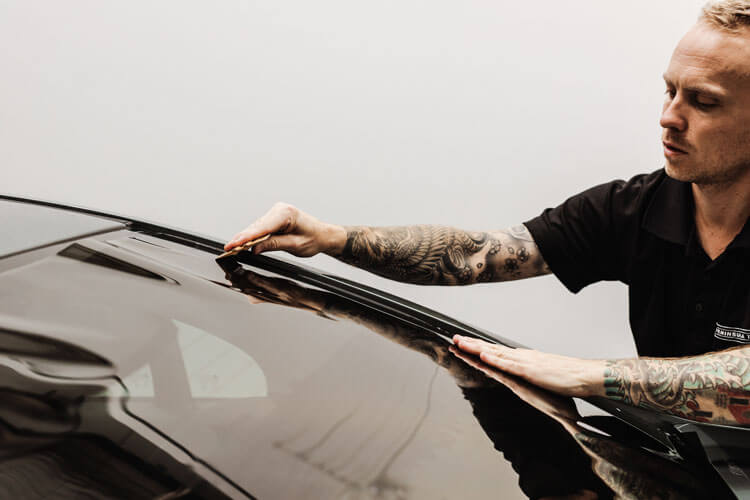Carbon Window Tint vs. Ceramic Tint: What's the Difference
Carbon window tint and ceramic tint are two popular types of window film used to improve the appearance and functionality of car windows.
The main difference between window tinting carbon and ceramic window tint is the type of material used to create the tint. Carbon tint is made by layering a film that contains carbon particles onto the glass surface. This type of tint is known for its ability to block out heat and UV rays, while also reducing glare.
Ceramic tint, on the other hand:
is made by layering a film that contains ceramic particles onto the glass surface. This type of tint is more advanced than carbon tint and is known for its ability to block out even more heat and UV rays,
while also reducing glare. Ceramic tint is also more durable and scratch-resistant than carbon tint, making it a popular choice for those who want a long-lasting solution.
In terms of appearance, both types of tint offer a sleek and stylish look to the car windows:
However, ceramic tint is known for its clarity and does not interfere with electronic signals, making it a better choice for those who have electronic devices in their cars.
Overall, while both carbon and ceramic tint are effective at reducing heat and UV rays, ceramic tint is the more advanced and durable option.
Advantages of Ceramic Window Tinting:
Ceramic window tinting offers several advantages over other types of window tinting, including:
Heat reduction:
Ceramic window tinting can significantly reduce the amount of heat entering your vehicle or home, providing greater comfort and helping to lower your energy bills.
UV protection:
Ceramic window tinting blocks up to 99% of harmful UV rays, which can fade your upholstery, carpets, and draperies, as well as damage your skin.
Glare reduction:
Ceramic window tinting can reduce the glare from the sun, headlights, and other bright lights, which can help you see better and reduce eye strain.
Durability:
Ceramic window tinting is highly resistant to fading, cracking, and peeling, so it can last for many years with little maintenance.
Aesthetics:
Ceramic window tinting can enhance the appearance of your vehicle or home, providing a sleek, uniform look while increasing privacy.
Overall, ceramic window tinting is a highly effective and durable option that can provide numerous benefits for both residential and commercial applications.
Which is the Best Window Tint Material For Your Car?
The best window tint material for your car will depend on your personal preferences and needs. However, some popular options include:
Ceramic Tint:
Ceramic tint is a high-performance film that blocks out up to 99% of the sun's harmful UV rays. It also blocks out heat, making it an excellent choice for hot climates.
Ceramic tint is durable and long-lasting, and it does not interfere with electronic signals, making it suitable for cars with advanced technology features.
Carbon Tint:
Carbon tint is another popular option. It blocks out around 40% of the sun's heat and provides good UV protection. It is also affordable and does not fade or change color over time.
Dyed Tint:
Dyed tint is the most affordable option and provides good privacy. However, it does not block out heat as effectively as other options, and it may fade or discolor over time.
Metalized Tint:
Metalized tint is a durable and best window tinting long-lasting option that provides good heat and UV protection. However, it can interfere with electronic signals and may be less effective in areas with weak signals.
When choosing a window tint material for your car:
consider your budget, the climate in which you live, and your specific needs for heat and UV protection. Also, be aware of any laws or regulations regarding window tinting in your area.

Comments
Post a Comment